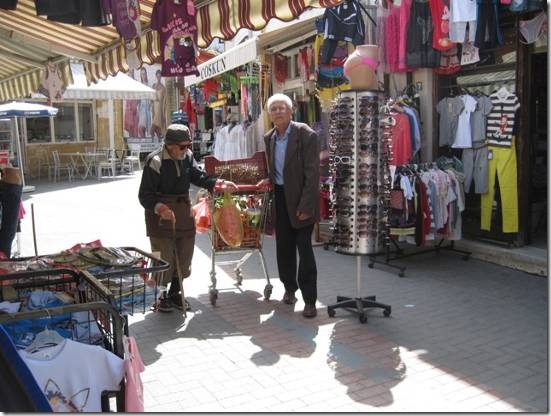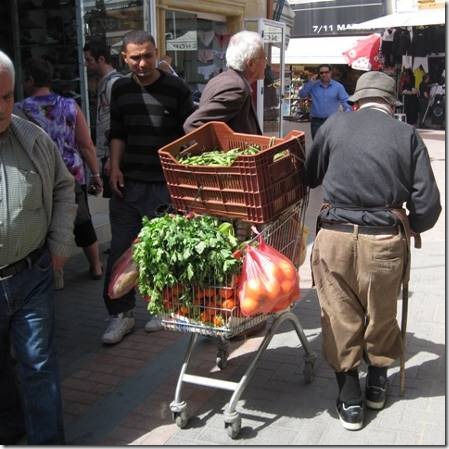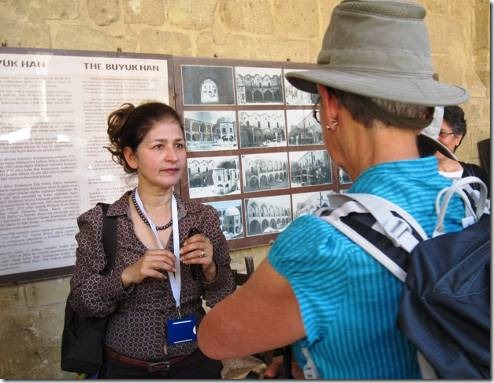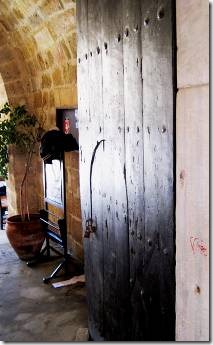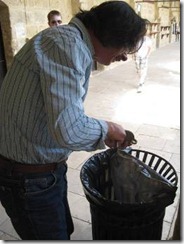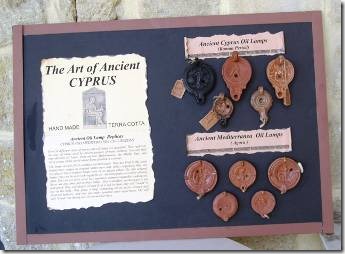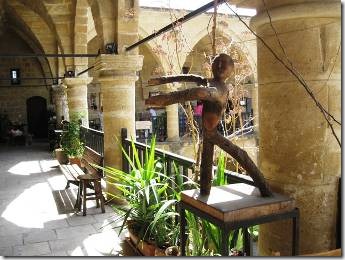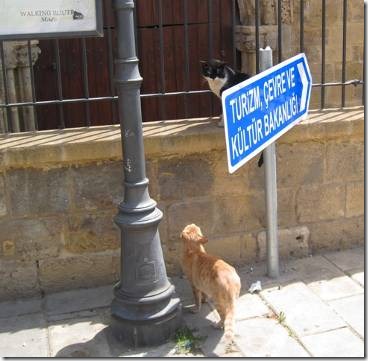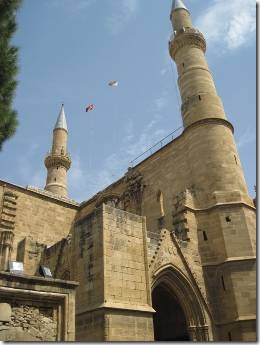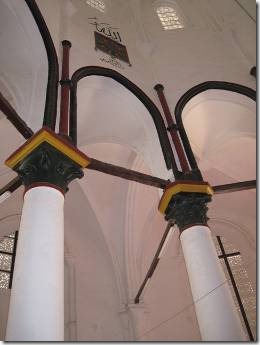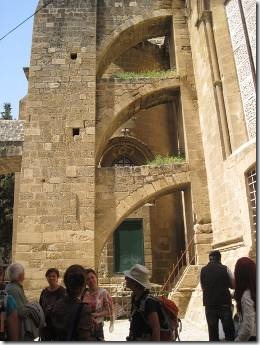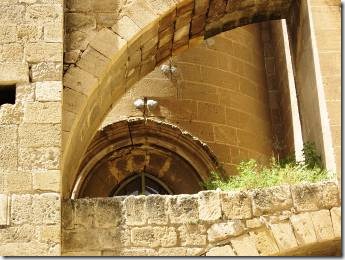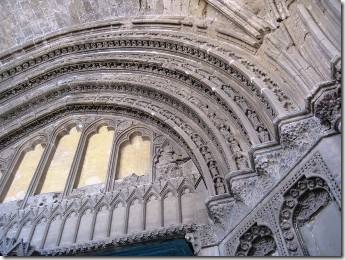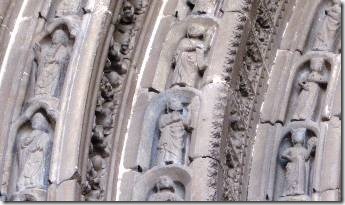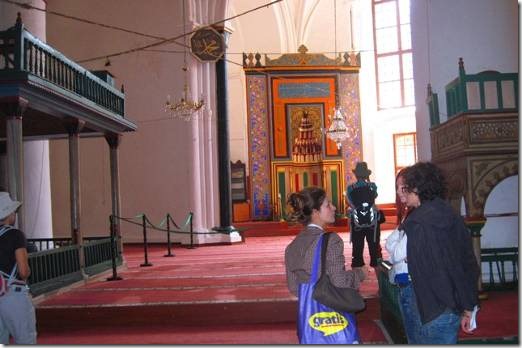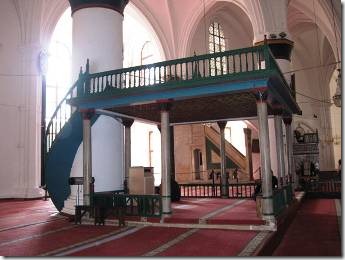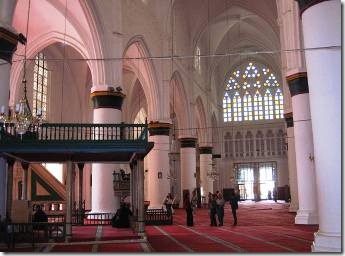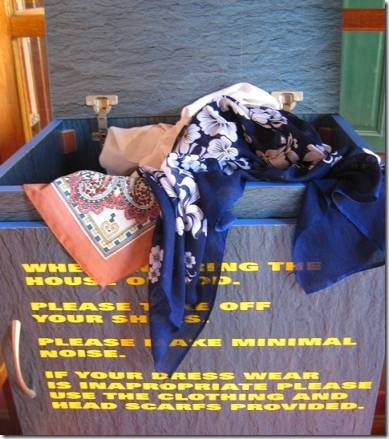I am learning more about Nicosia with each email. I’ve one more after this one to complete the story.
Ru
Happy 100 Fenway Park!
Nicosia Part 2
While Selin was explaining to us about the cocoon art I noticed this scene down the street. My father lost his sight in his 60s so maybe I have more of an awareness of the blind. I would really like to know the story of these men. Are the vegetables in the cart being taken home or being taken for sale? How long have these men been friends? What are their lives like?
Then we continued on to the Büyük Han.
Charmaine listens as Selin tells the history of the Han with renovation photos behind her.
http://www.mydoramac.com/wordpress/?p=9710 is the link to our prior visit to Nicosia with Rob and Julia with info about the Büyük Han.
http://www.whatson-northcyprus.com/interest/nicosia/north_nicosia/buyuk_han.htm is a direct link to info about the Büyük Han.
A camel through the eye of a needle.
“This Great Inn is the most important Ottoman structure on the whole of the island. Construction began in 1572 under the guidance of Mustafa Pasha who was the first Ottoman governor of Cyprus and it was quickly established as the major trading point. These Inns or Caravanserais were used by merchants from the Orient, Arabia, Anatolia and Europe to store and trade their goods. In the centre there is a small mosque with ablution facility beneath it and there are two entrances. The doorways are high enough and wide enough to allow a fully laden camel to enter. Once inside the merchant would unload his camels and display his merchandise in the room on the lower floor, taking the upper room as his accommodation during his period of trade. The camels would have been stabled outside the Inn. At night the large entrance doors to the caravanserais would be closed and secured and the only access would be through a small doorway just large enough for a person to get through. This small door is called the “eye of the needle”, and reference is made to it in the Holy Bible. St. Matthew, chapter 19 verse 24, “Again I tell you, it is easier for a camel to go through the eye of a needle than for a rich man to enter the kingdom of God!” http://www.northcyprus.co.uk/the-great-inn-the-buyuk-han/
The other interesting story about the doors is this. Each night the doors were locked to protect the merchants inside and their wares. In the morning if there were any dispute among the merchants, the doors would not be open until the dispute was resolved. We should use that method today with political leaders; lock them in a room until they resolve issues and then they’d get resolved so everyone could go on vacation.
The Büyük Han now is a venue for crafts people. We saw several interesting objects d’art but boat living made them not as tempting as they would have been if we had a land home.
I’m reposting the link to Heidi Trautmann’s story about Nicosia and the artists in the Büyük Han because I certainly didn’t do them justice in these few photos.
http://www.heiditrautmann.com/category.aspx?CID=8762668225
Cat stand-off.
http://www.cyprus44.com/nicosia/sophia-cathedral.asp was the next stop on our tour.
The Selimiye Mosque converted from the Ayia Sofia Cathedral
Minarets were added and the interior was whitewashed to cover all images of people and animals.
“The Selimiye Mosque in Nicosia was a thirteenth-century cathedral (Ayia Sofia) which was converted to a mosque in 1570 by removing the choir and altars and changing the arrangement of windows and doors so that the main entrance was from the north, At some later date a cylindrical Ottoman minaret was built on to the projecting corner buttresses.” http://archnet.org/library/dictionary/entry.jsp?entry_id=DIA0079&mode=full
http://www.cypnet.co.uk/ncyprus/city/nicosia/selimiye/index.html explains that some of the architectural details were added to protect the structure during possible future earthquakes.
Supportive buttresses
Glass rods are between the grey blobs and if they break it indicates earthquake movement, pretty ingenious!
The main entrance’s frame bears impressive sculptures. Three of the four arches are decorated with reliefs depicting kings, prophets, apostles and bishops.
http://en.wikipedia.org/wiki/Selimiye_Mosque_(Nicosia)
The former Cathedral Church of St. Sophia erected by the Lusignan kings from 1208 to 1326 is the oldest and finest example of Gothic architecture in Cyprus. It was once regarded as the most magnificent Christian sacred building in the Middle East….The Cathedral was destroyed in turn by the Genoese, the Mamelukes and several major earthquakes.” Eyewitness Travel Cyprus
“With Nicosia’s occupation by the Ottomans (1570), the cathedral of Agia Sofia was turned into a mosque and two minarets were added onto the building’s west part. The cathedral’s rich sculptural decoration was destroyed and so were the frescoes, the sculptures and the stained glass decoration (vitraux) depicting scenes from the Old and New Testament. Funerary tombstones of various Lusignan kings and princes were also destroyed.” http://en.wikipedia.org/wiki/Selimiye_Mosque_(Nicosia)
We all were fairly covered up so had no need to borrow a scarf.

